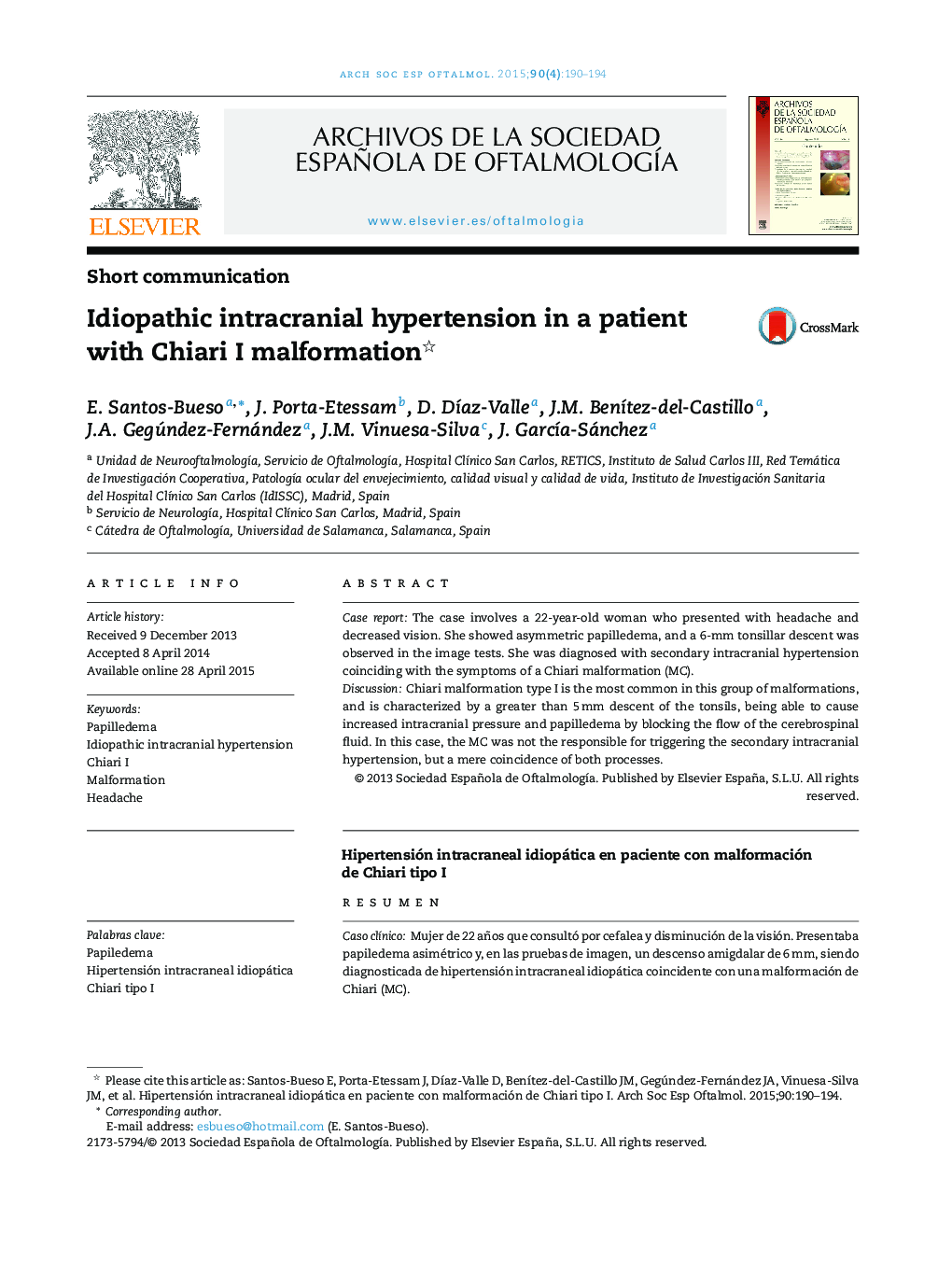| Article ID | Journal | Published Year | Pages | File Type |
|---|---|---|---|---|
| 4008179 | Archivos de la Sociedad Española de Oftalmología (English Edition) | 2015 | 5 Pages |
Case reportThe case involves a 22-year-old woman who presented with headache and decreased vision. She showed asymmetric papilledema, and a 6-mm tonsillar descent was observed in the image tests. She was diagnosed with secondary intracranial hypertension coinciding with the symptoms of a Chiari malformation (MC).DiscussionChiari malformation type I is the most common in this group of malformations, and is characterized by a greater than 5 mm descent of the tonsils, being able to cause increased intracranial pressure and papilledema by blocking the flow of the cerebrospinal fluid. In this case, the MC was not the responsible for triggering the secondary intracranial hypertension, but a mere coincidence of both processes.
ResumenCaso clínicoMujer de 22 años que consultó por cefalea y disminución de la visión. Presentaba papiledema asimétrico y, en las pruebas de imagen, un descenso amigdalar de 6 mm, siendo diagnosticada de hipertensión intracraneal idiopática coincidente con una malformación de Chiari (MC).DiscusiónLa MC tipo I es la más frecuente de este grupo de malformaciones y se caracteriza por un descenso amigdalar superior a 5 mm, pudiendo originar hipertensión intracraneal por el bloqueo del líquido cefalorraquídeo. En este caso la MC no fue la responsable de la hipertensión intracraneal, sino una casualidad al coincidir ambos procesos.
